Why you can trust TechRadar
Nothing stays the same for long in smartphone world, and as sure as night follows day the Nokia Lumia 920 has been succeeded by the Nokia Lumia 925 in the 'normal' smartphone market - we're not talking about the high-power Lumia 1020 or Lumia 1520 here.
"Night" is apposite here, because the ability to take clear photos in dim light without flash, while supposedly bettering rivals, is what the marketing hype surrounding the Nokia 925 has focused on - if you'll forgive the pun.
In fairness, though, this does appear to have a grain of truth, and matches our testing of the Nokia 920. That handset came off slightly better than average in lower light when viewed as a standalone digital image capture device, and ranged against the likes of the iPhone 5, Sony Xperia S and newer Sony Xperia Z, HTC One X and plain HTC One, along with the Samsung Galaxy S3 and Samsung Galaxy S4.
So, in comparing the newer Nokia 925 with the earlier Nokia 920, which phone comes off best overall for use as a camera phone? Let's find out.
Build and handling
In terms of handling, there's less to get to grips with on the Nokia 925 when compared with the earlier Nokia 920, since Nokia has made the overall handset shorter, narrower and thinner, if only by a millimetre or two here and there.
The Nokia 925 measures 70.6 x 8.5 x 129mm (2.8 x 0.3 x 5.1 inches) to the Nokia 920's dimensions of 70.8 x 10.7 x 130.3mm (2.8 x 0.4 x 5.1 inches).
The Nokia 925 also weighs 139g (4.9oz) as opposed to the Nokia 920's 185g (6.5oz) - which makes the Nokia 925 the more portable of the two for carrying around, and it certainly feels lighter in the pocket.
The aluminium build of the Nokia 925 and the grey-backed version with metallic bezels we had also helps the newer model to stand out and look a little more stylish than the Nokia 920.
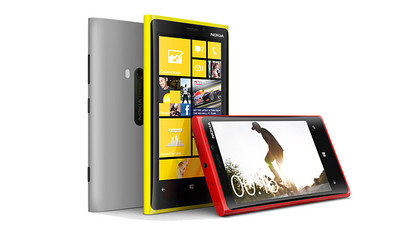
While size and weight reductions are good news in terms of comfort, they're not necessarily fantastic in terms of the Nokia 925's use as a camera compared to the Nokia 920. Generally speaking a heavier and wider body, as well as providing you with something to get a firmer hold on, can also reduce hand shake and resulting blur.
Weighing the two phones up in each hand, the weight difference, though only a few grams, is noticeable.
Though there's less movement in the Nokia 920 when held between both hands to take a picture landscape fashion - which is preferable - the Nokia 925 certainly feels the more comfortable of the two when held portrait fashion, so it's horses for courses. Going on looks alone however, out of the two, the Nokia 925 would be the camera phone we'd want to own.
Controls
The slimmer profile of the Nokia 925 hasn't resulted in the removal or re-positioning of any important controls either in terms of functionality and its use as a camera.
Though you can fire off a shot by tapping the screen, the side-mounted controls remain identically positioned to the Nokia 920, so we have a physical shutter release button on the handset too, which does contribute to the operation feeling more obviously camera-like.
Both the Nokia 920 and Nokia 925 are protected to a small degree against camera shake via optical image stabilised PureView technology.
Lens and sensor
It's not just the number of pixels crammed onto the sensor (8.7 million in both camera phones), but also the physical size of the lens that's important when considering any camera.
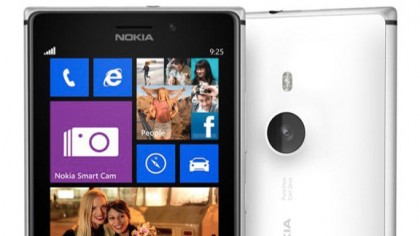
While the porthole housing the lens on the back is larger and more prominent on the newer Nokia 925 than on the older Nokia 920, the optics at the heart of both are equally tiny, for all the talk this time around of 'six lens elements'.
The lenses of both phones' cameras are Carl Zeiss-branded, and since sensor size and resolution hasn't altered, you would think the lens hasn't either - although the good news is the lens on the 925 has been tweaked to improve clarity and sharpness.
Aperture
Maximum aperture for both the Nokia 925 and the Nokia 920 is a bright f/2.0, which is respectable, and compares well with most fixed lens dedicated compact cameras. As does a wide fixed focal length of 26mm with an 8cm minimum focus range.
Should you have to use extra illumination, then dual LED flash is provided with an operating range of 3 metres. Again this performance is identical for both Nokia Lumia handsets.
Autofocus
The autofocus JPEG-only camera resolution hasn't been hiked between the Nokia 920 and Nokia 925 either, so an 8.7 megapixel, 1/3-inch backside illuminated sensor remains.
Of course, more pixels on the same sized chip can lead to image noise - visible as grain-like speckles - appearing in shadow details, so with the Nokia 925 being sold partly on its low light claims, not bumping up the pixel count between models has a degree of justifiable logic.
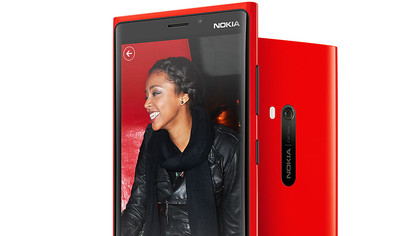
Naturally the bright f/2.0 aperture lens and the fact that the sensor is back illuminated also helps with the light gathering abilities of both the older and newer smartphone.
Screen
The display used for framing and reviewing images - and navigating all the rest of the phones' non-camera features - is also identical on both handsets at, 4.5-inches, with a 1280 x 768 pixel display resolution.
This also uses the Puremotion HD+ ClearBlack display, meaning pictures are superbly clear and crisp on the screen (providing you took them that way, that is).
Front-facing camera
Also the same for our pair is the front-facing camera for self-portraits, which here offers 1.2 megapixels (or 1280 x 960 pixels) - so HD rather than Full HD.
It also boasts an almost as bright aperture of f/2.4 and results in some solid selfies.
Smart features
On the Nokia Lumia 925 (and now with the Lumia 920 thanks to a software update), as with so many camera manufacturers currently, Nokia is referring to its built-in camera as being 'smart'.
In our experience this is more a fancy marketing term than any tangible change up of gear, but the claim here partly refers to the ability to shoot a sequence of shots to end up with one you might actually want to keep.
By doing so, you then have the ability to excise moving objects from your frame that are ruining the shot - there's always someone walking by as you're trying to photograph that eighth wonder, after all - as is likewise offered by the HTC One's Object Removal function. Just tap the Nokia's screen to prompt this in-camera Photoshop-like piece of magic.
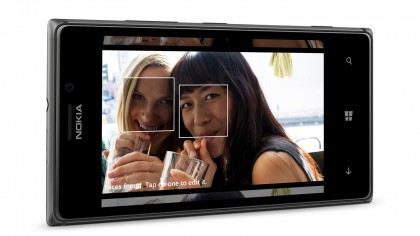
Alternatively you can combine the sequential frames into one shot, zoetrope-style. Cool, but not a valid reason for buying/adopting the Nokia 925 or 920 alone, and it is slightly irritating that this is the camera's default setting upon power up, when you might not always want a burst of images.
Other abilities include being able to add motion blur to shots, change faces and generally enhance the quality of the snap you're getting. The processing qualities of both phones isn't stellar though, meaning on more than one occasion we had to retry the same set of snaps in Smart Cam mode to get the camera to admit it had enough imagery to create these effects.
Fortunately if you don't want the camera to rattle off a sequence you can select regular single shot capture mode with a couple of further screen taps.
Here you can switch between 16:9 aspect ratio images that fill the handset screen or 4:3 ratio ones, which is the most common default setting for a standalone digital camera.
Video
Video is also identical on both cameras, in being the industry standard Full HD 1920 x 1080 pixels at 30fps.
Low light shooting
Something that has actually changed here, however, is that instead of selectable light sensitivity settings running from a standard ISO 100 to a modest ISO 800 on the Nokia 920, Nokia has now upped this to a maximum ISO 3200 on the Nokia 925, which is approaching point and shoot digital camera territory for specification.
Update: With the addition of Nokia's Pro cam application, the 920 and 925 are both capable of ISO 4000.
However even before this update the photos we got out of this device weren't noticeably different, with a pleasing level of detail delivered when focus gets it spot on.
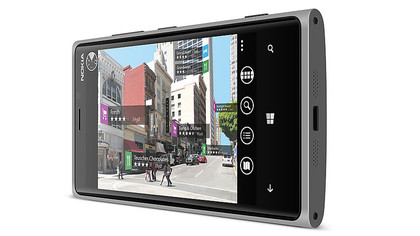
However, for both camera phones we did notice a tendency for auto white balance to wander between shots taken in succession in single shot (non 'smart') mode - with daylight providing a blueish colour cast, for example.
Where the duo again came off slightly better than rivals was when shooting in lower light without flash, which was due in part once again to the twinning of a bright aperture f/2 lens with a back illuminated sensor.
Image editing
Both the Nokia 920 and the Nokia 925 offer a limited degree of image editing accessible - such as the ability to rotate, crop and auto enhance your shots.
Plus a Creative Studio feature enables you to turn pre-captured images to black and white (here referred to as 'Silver' - a nod perhaps to silver halide) or give them toy camera-like colour filter effects such as 'Jade' and 'Amber'. Again this is a fun feature, if non-essential.
Manual controls
Auto and manual white balance settings are equally accessible on the Nokia 925 as they are on the Nokia 920, with exposure compensation of +/- 2EV identical too.
A focus assist light can also be activated if desired, while on the Nokia 925, as on the Nokia 920, flash settings are restricted to a functional rather than elaborate auto, on or off.
Sample images

Nokia Lumia 925 (Click here to see the full resolution image)

Nokia Lumia 920 (Click here to see the full resolution image)

Nokia Lumia 925 (Click here to see the full resolution image)

Nokia Lumia 920 (Click here to see the full resolution image)

Nokia Lumia 925 (Click here to see the full resolution image)

Nokia Lumia 920 (Click here to see the full resolution image)

Nokia Lumia 925 (Click here to see the full resolution image)

Nokia Lumia 920 (Click here to see the full resolution image)
Verdict: which has the best camera?
There's a lot about the Nokia 925 that has stayed the same in terms of camera specification and performance when compared with the earlier Nokia 920 handset.
So much so that we have a hard time justifying the Nokia 925 as markedly better, since it wouldn't be worth upgrading your phone for the camera and its attendant features here alone.
But largely the pluses (along with most of the camera spec) remain the same for both cameras: a bright f/2 aperture lens, Windows operating system, 8 megapixel camera, image editing tools, large and bright screen, Carl Zeiss optics and back illuminated sensor are all excellent features.
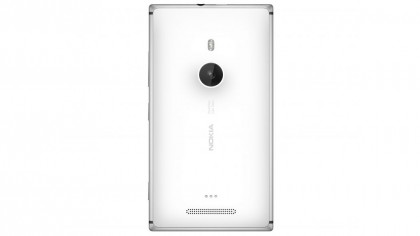
However, the Nokia Lumia 925 has no media card slot and was pricier on launch than the largely identical Nokia Lumia 920, making that earlier phone currently the better buy.
The Nokia Lumia 920's drawbacks are that it's marginally larger and noticeably weightier than the Nokia Lumia 925, and it's easy to inadvertently select functions at the far-left and right extremities of the screen when turning the phone on its side to shoot in landscape orientation.
Our end conclusion then isn't one that was hard to make. With differences being minor tweaks rather than a major overhaul, if you come across the Nokia 920 at a much lower price, then currently that older handset is definitely the better value buy.
James is a freelance phones, tablets and wearables writer and sub-editor at TechRadar. He has a love for everything ‘smart’, from watches to lights, and can often be found arguing with AI assistants or drowning in the latest apps. James also contributes to 3G.co.uk, 4G.co.uk and 5G.co.uk and has written for T3, Digital Camera World, Clarity Media and others, with work on the web, in print and on TV.
